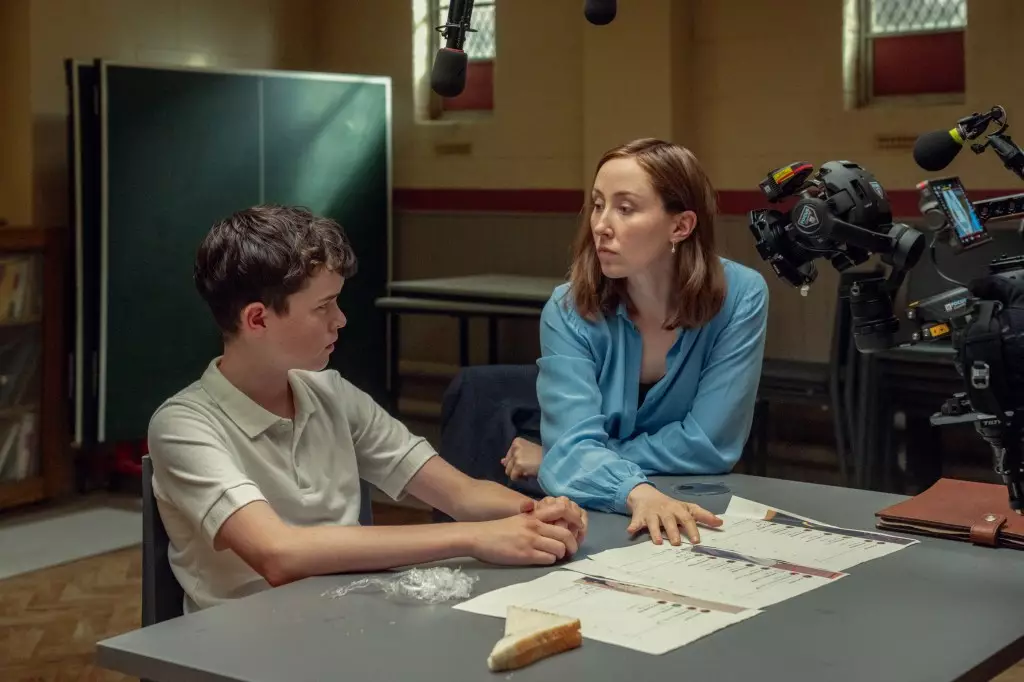In the evolving landscape of television, the narrative surrounding the dominance of streaming giants like Netflix is increasingly charged with skepticism. Critics argue that these platforms, while revolutionary in their reach, often operate as superficial tourists in a world they barely nurture. They capitalize on the groundwork laid by traditional broadcasters and independent creators, offering a fleeting glimpse of innovation without fostering the genuine growth and development of talent and stories. The debate at the Edinburgh TV Festival spotlighted this dynamic, highlighting the crucial role of public service broadcasters (PSBs) like Channel 4 in cultivating authentic and socially relevant content.
Contrary to the narrative of streaming platforms as pioneers, many industry insiders believe they are more like opportunistic spectators, swooping in on successful concepts largely developed elsewhere. Netflix’s hit series, *Adolescence*, exemplifies this phenomenon. While immensely popular, its origins as a product nurtured by Channel 4 reveal a fundamental shift: the real growth and nurturing of creative talent often occur behind the scenes within traditional broadcasting environments. If anything, streaming services have become consumers of legacy content and established talent, rather than incubators for new ideas.
This raises urgent questions about what kind of stories we risk losing as the industry becomes increasingly driven by international funding and global audiences. Do streaming platforms prioritize spectacle and high production values at the expense of investigative journalism, current affairs, and culturally specific narratives? The emphasis on retrospective shows and entertainment-centric content suggests a commodification of storytelling, where timely, pressing issues like Gaza or political upheaval are sidelined. Public broadcasters fill this critical gap, offering a platform for issues of social importance that demand deeper engagement—an essential function that streaming services neglect to fulfill.
The Economic Dilemma: Can UK Production Thrive in a Streaming-Dominated Era?
The financial aspect of content creation is a recurring theme in this debate. The success of *Adolescence* underscores the significant investments required to produce high-quality drama. Its international appeal and popularity illustrate a model where co-production funding becomes a necessity, allowing UK firms to share the financial risks. However, reliance on external funding sources also poses a risk: it compels producers to tailor their stories for international markets, potentially diluting local relevance and storytelling integrity.
This situation prompts a broader reflection on the sustainability of UK television production. As Simon Heath of World Productions warns, the temptation to focus solely on internationally viable projects could fundamentally change the nature of British storytelling. Instead of nurturing a diverse, locally rooted artistic landscape, the industry might gravitate toward formulaic content engineered primarily for mass appeal, eroding the rich tapestry of culturally specific narratives that historically defined UK TV.
Furthermore, the trend towards streamers favoring in-house productions over co-productions threatens the survival of independent producers. This consolidates control within streaming platforms, reducing opportunities for indie companies to innovate and tell unique stories. The challenge for the UK industry lies in balancing international ambitions with the preservation of creative independence—a delicate act that requires strategic funding models and policies that support diverse voices.
The Role of Public Service Broadcasters in Safeguarding Cultural and Political Discourse
Amid these tensions, the value of PSBs like Channel 4 emerges as a vital bulwark against commercial homogenization. Compton’s defense of Channel 4’s independent spirit underscores the importance of a broadcaster that prioritizes public interest, experimental storytelling, and investigative journalism. Her criticisms of Netflix as “TV tourists” echo a broader concern that streamers lack the commitment or capacity to engage in the depth of current affairs and social critique.
The ongoing debate about Channel 4’s in-house productions exemplifies this broader struggle. While some industry voices question the effectiveness of such a unit, advocates like Compton argue it is essential for ensuring the broadcaster remains innovative and independent. Public funding and government policies should ideally reinforce this role, rather than undermine it, by empowering broadcasters to serve as incubators for groundbreaking, socially conscious stories.
In the end, the tension between commercial and public broadcasting reflects a fundamental question about the future of storytelling: should television be a democratic space for diverse, meaningful narratives, or simply a platform for global entertainment? The answer may well determine how well a society retains its cultural voice amidst the towering presence of streaming behemoths. The challenge—and opportunity—lies in championing a media ecosystem where creativity is valued over profitability, and where genuine storytelling can flourish without being subsumed by the relentless pursuit of global market share.
